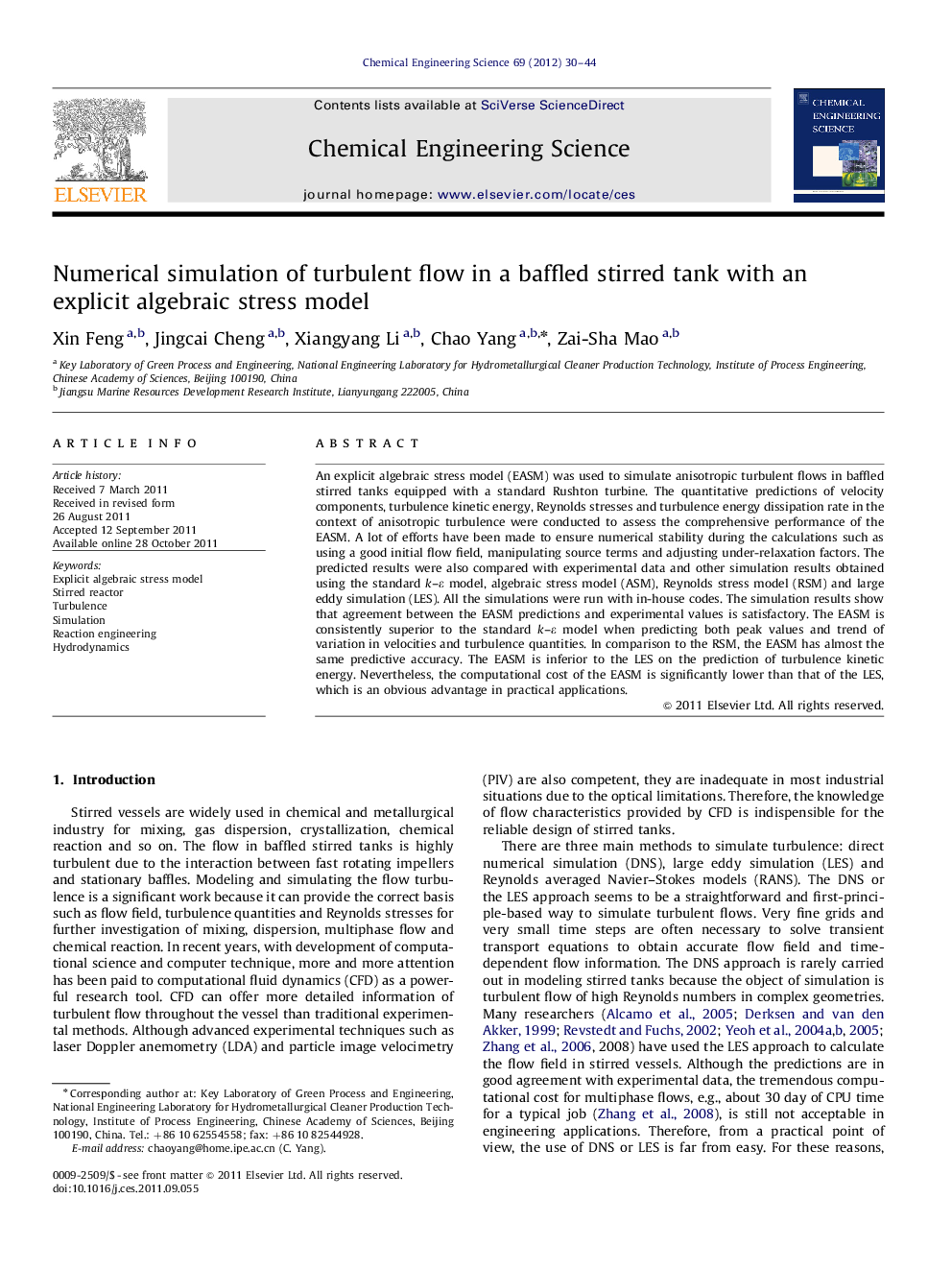| Article ID | Journal | Published Year | Pages | File Type |
|---|---|---|---|---|
| 155879 | Chemical Engineering Science | 2012 | 15 Pages |
An explicit algebraic stress model (EASM) was used to simulate anisotropic turbulent flows in baffled stirred tanks equipped with a standard Rushton turbine. The quantitative predictions of velocity components, turbulence kinetic energy, Reynolds stresses and turbulence energy dissipation rate in the context of anisotropic turbulence were conducted to assess the comprehensive performance of the EASM. A lot of efforts have been made to ensure numerical stability during the calculations such as using a good initial flow field, manipulating source terms and adjusting under-relaxation factors. The predicted results were also compared with experimental data and other simulation results obtained using the standard k–ε model, algebraic stress model (ASM), Reynolds stress model (RSM) and large eddy simulation (LES). All the simulations were run with in-house codes. The simulation results show that agreement between the EASM predictions and experimental values is satisfactory. The EASM is consistently superior to the standard k–ε model when predicting both peak values and trend of variation in velocities and turbulence quantities. In comparison to the RSM, the EASM has almost the same predictive accuracy. The EASM is inferior to the LES on the prediction of turbulence kinetic energy. Nevertheless, the computational cost of the EASM is significantly lower than that of the LES, which is an obvious advantage in practical applications.
Graphical abstract.Figure optionsDownload full-size imageDownload high-quality image (142 K)Download as PowerPoint slideHighlights► We use an explicit algebraic stress model (EASM) to simulate turbulence in stirred tanks. ► The EASM is numerically robust and of economical computational cost. ► The EASM is consistently superior to the standard k–ε model. ► The EASM is a little inferior to the large eddy simulation.
